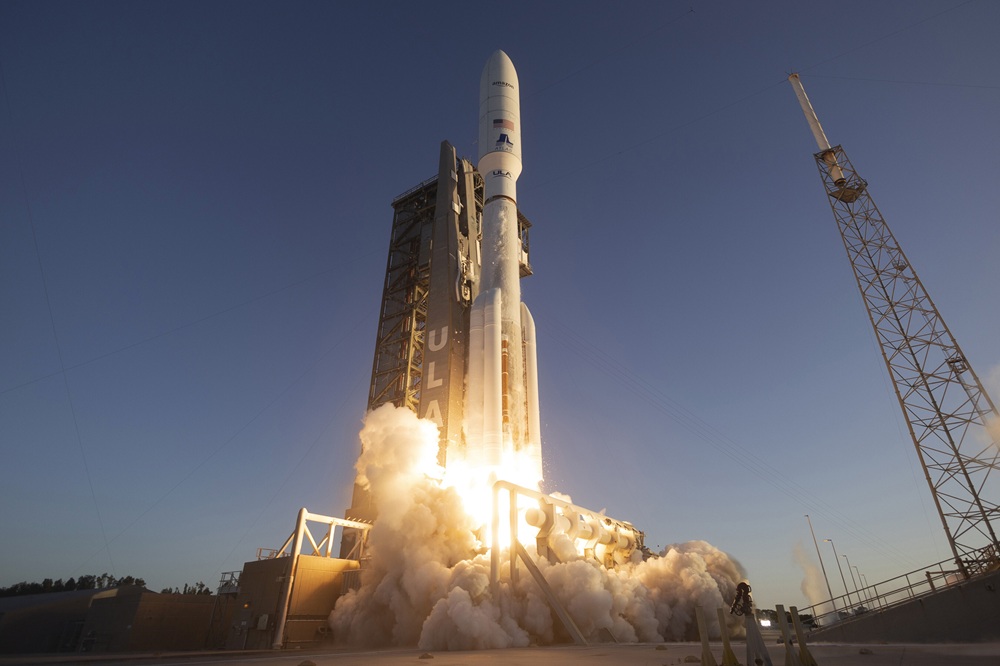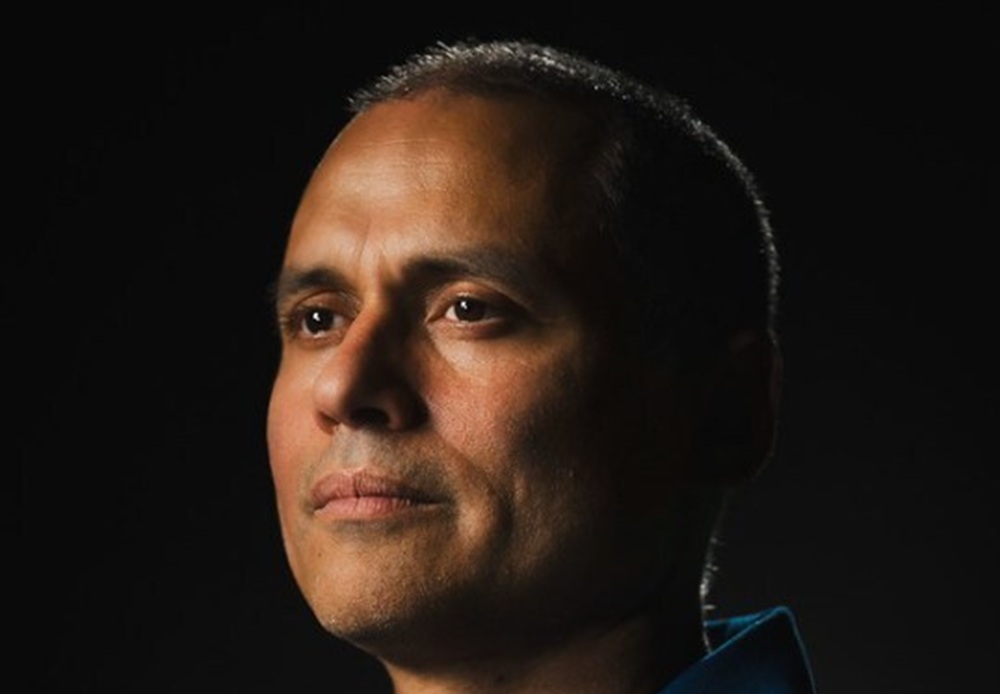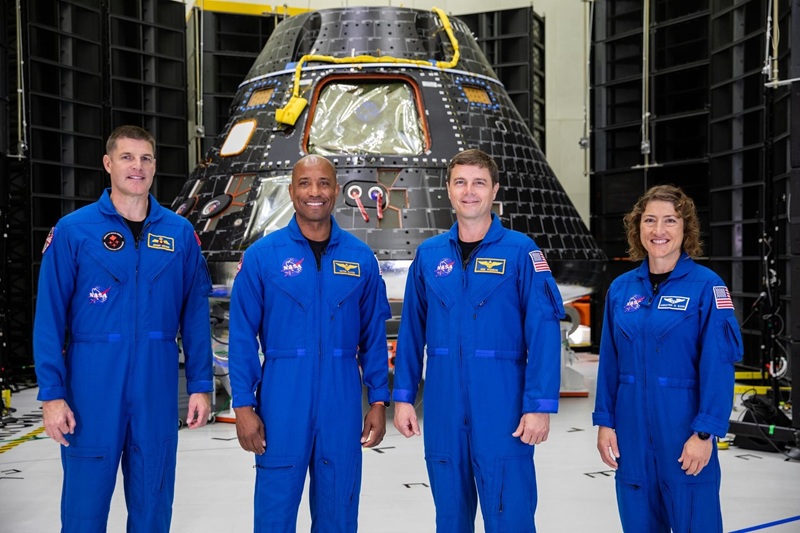CAPE CANAVERAL SPACE FORCE STATION, Florida: In a significant stride toward bridging the global digital divide, a United Launch Alliance (ULA) Atlas V rocket successfully launched Amazon’s Kuiper 2 mission on the morning of June 23, 2025. Liftoff occurred precisely at 6:54 a.m. EDT from Space Launch Complex-41, marking the second batch deployment of Project Kuiper satellites designed to deliver high-speed, low-latency broadband internet to underserved and unserved communities worldwide.
The 205-foot-tall Atlas V rocket, designated AV-105 by ULA, carried 27 operational satellites into low Earth Orbit (LEO) at approximately 280 miles (450 kilometers) altitude. Following deployment, the satellites will be raised to their final orbit of about 392 miles (630 kilometers) by Amazon’s mission operations team based in Redmond, Washington. This launch brings the total number of Kuiper satellites in orbit to 54, a crucial step toward the constellation’s ultimate goal of over 3,200 satellites providing global broadband coverage.
The Kuiper 2 mission was initially scheduled for June 16 but was postponed due to a nitrogen purge issue in the rocket’s booster engine. After addressing the technical challenge, ULA conducted a smooth countdown and executed a flawless launch from the Cape Canaveral pad, supported by favorable weather conditions with an 80 percent chance of clear skies.
“This launch exemplifies our commitment to enabling global connectivity,” said Gary Wentz, ULA’s vice president of Government and Commercial Programs. “Our partnership with Amazon empowers their mission to bridge the digital divide through reliable satellite technology. ULA is proud to be a catalyst for innovation and connection worldwide.” Wentz emphasized ULA’s role in delivering these critical satellites, which will underpin Amazon’s ambitious broadband network.
Project Kuiper, Amazon’s satellite internet initiative, aims to provide fast, affordable broadband access to billions of people who currently lack reliable connectivity. The constellation will support a diverse customer base, including consumers, businesses, government agencies, schools, and hospitals, especially in regions where traditional fiber and wireless infrastructure is impractical or unavailable. Amazon’s network combines a constellation of LEO satellites with compact customer terminals, a global ground station network, and cloud infrastructure powered by Amazon Web Services (AWS).
Amazon has secured the largest commercial procurement of launch capacity in history, with agreements for more than 80 launches across multiple providers, including ULA, SpaceX, Blue Origin, and Arianespace. ULA alone will launch more than half of the Kuiper constellation, with eight Atlas V missions and 38 launches planned on the next-generation Vulcan Centaur rocket. The Vulcan, which completed its maiden flight in January 2024, can deploy up to 45 Kuiper satellites per mission, significantly increasing deployment cadence compared to Atlas V’s 27 satellites per launch.
Following the Kuiper 2 mission, ULA’s next major launch is the first Vulcan mission for the U.S. Space Force, designated USSF-106. Vulcan’s certification by the Space Force in March 2025 marked a new era of assured access to space for national security missions, reflecting ULA’s decades-long role as a trusted provider for America’s most critical space assets. The Vulcan rocket incorporates modular architecture and advanced technology, expanding ULA’s capabilities into the commercial low Earth orbit market while continuing to serve government and defense needs.
The Kuiper constellation’s deployment is a race against time and technical complexity. After the first successful launch of 27 satellites in April 2025, Amazon’s Project Kuiper team demonstrated remarkable agility by integrating the next batch within just 17 days. Rajeev Badyal, vice president of Technology at Project Kuiper, expressed optimism about the program’s momentum, highlighting the rapid turnaround and collaboration with ULA to maintain a steady launch cadence.
Beyond the technical achievements, Project Kuiper embodies a broader vision of digital equity. Billions worldwide face economic and social disadvantages due to lack of internet access, limiting education, healthcare, and economic opportunities. Amazon’s satellite broadband aims to close these gaps by delivering reliable, high-speed internet even to remote and hard-to-reach locations. The project’s customer terminals offer a range of speeds, from 100 Mbps for ultra-compact models to 1 Gbps for enterprise-level applications, supporting diverse user needs.
Sustainability and space safety remain core priorities for Project Kuiper. Amazon has designed its satellites and constellation architecture to minimize space debris and comply with international standards, engaging with scientific and space operator communities to ensure responsible stewardship of the orbital environment.
As the Kuiper constellation grows, the collaboration between Amazon and ULA exemplifies the convergence of commercial innovation and aerospace expertise. Together, they are advancing a new frontier in global connectivity, where satellite broadband could transform lives and economies worldwide.





